Japan Winter Wildlife Spectacular: Photography Tour Report 2019
2-17 February 2019








































































A Blakiston's Fish Owl swoops in to catch its prey (image by Mark Beaman)
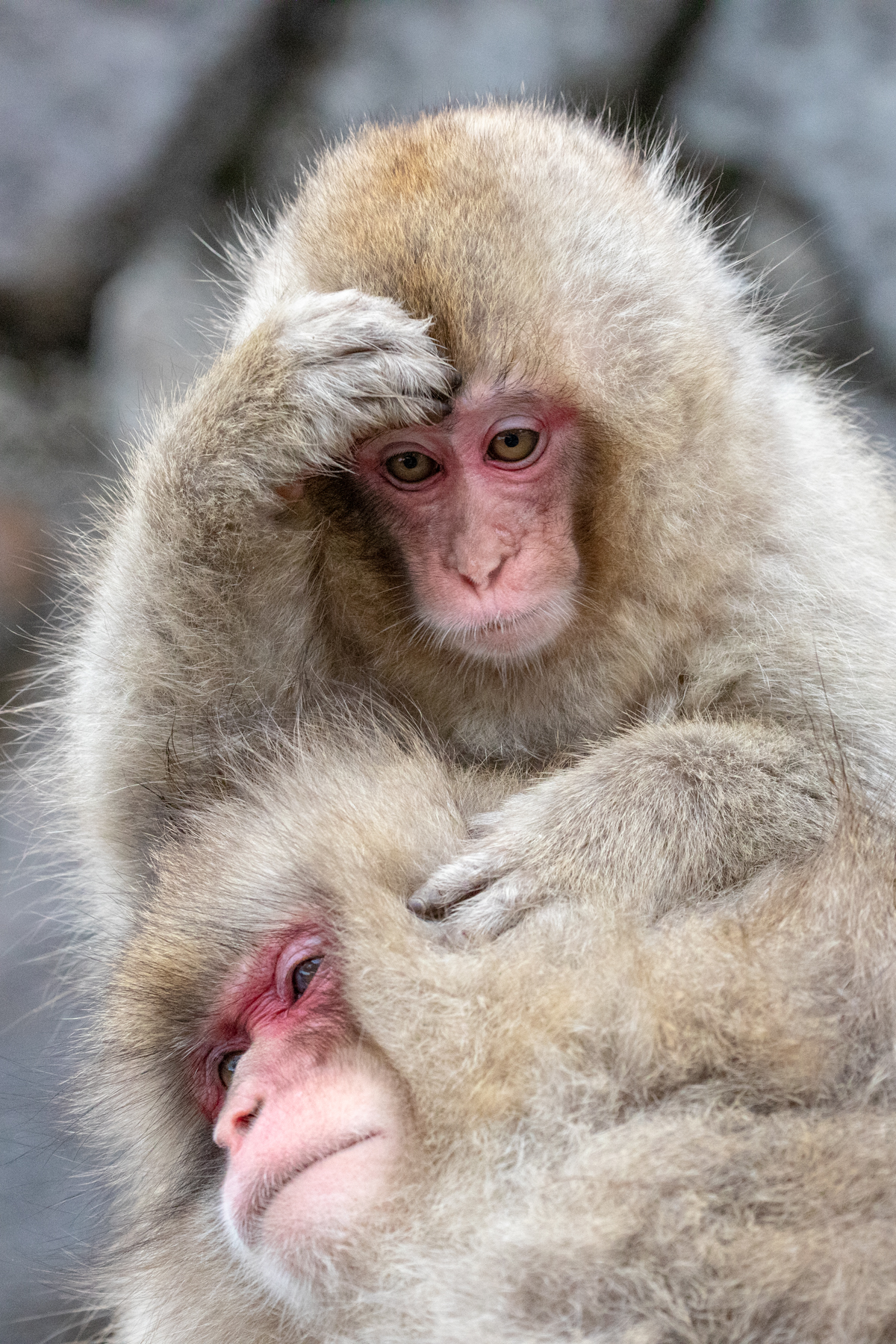
"How can I escape my ordained fate as a low-caste flea-groomer?" (image by Mark Beaman)

Red-crowned Cranes at their river roost at Otawa in Hokkaido. A Red Fox is watching them from the left side (image by Mark Beaman)
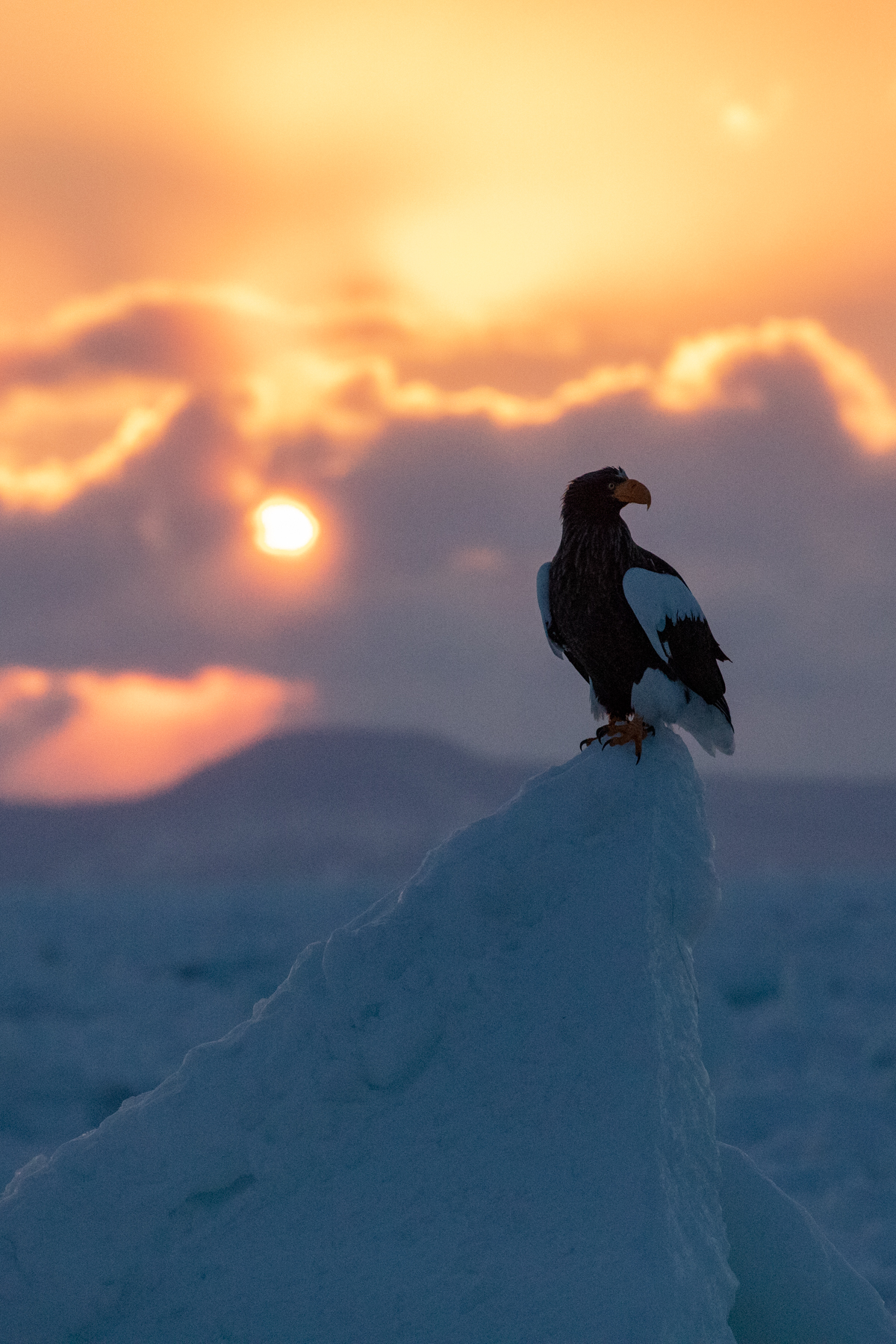
Steller's sunrise (image by Mark Beaman)

A Red Fox barks to advertise its territory (image by Mark Beaman)
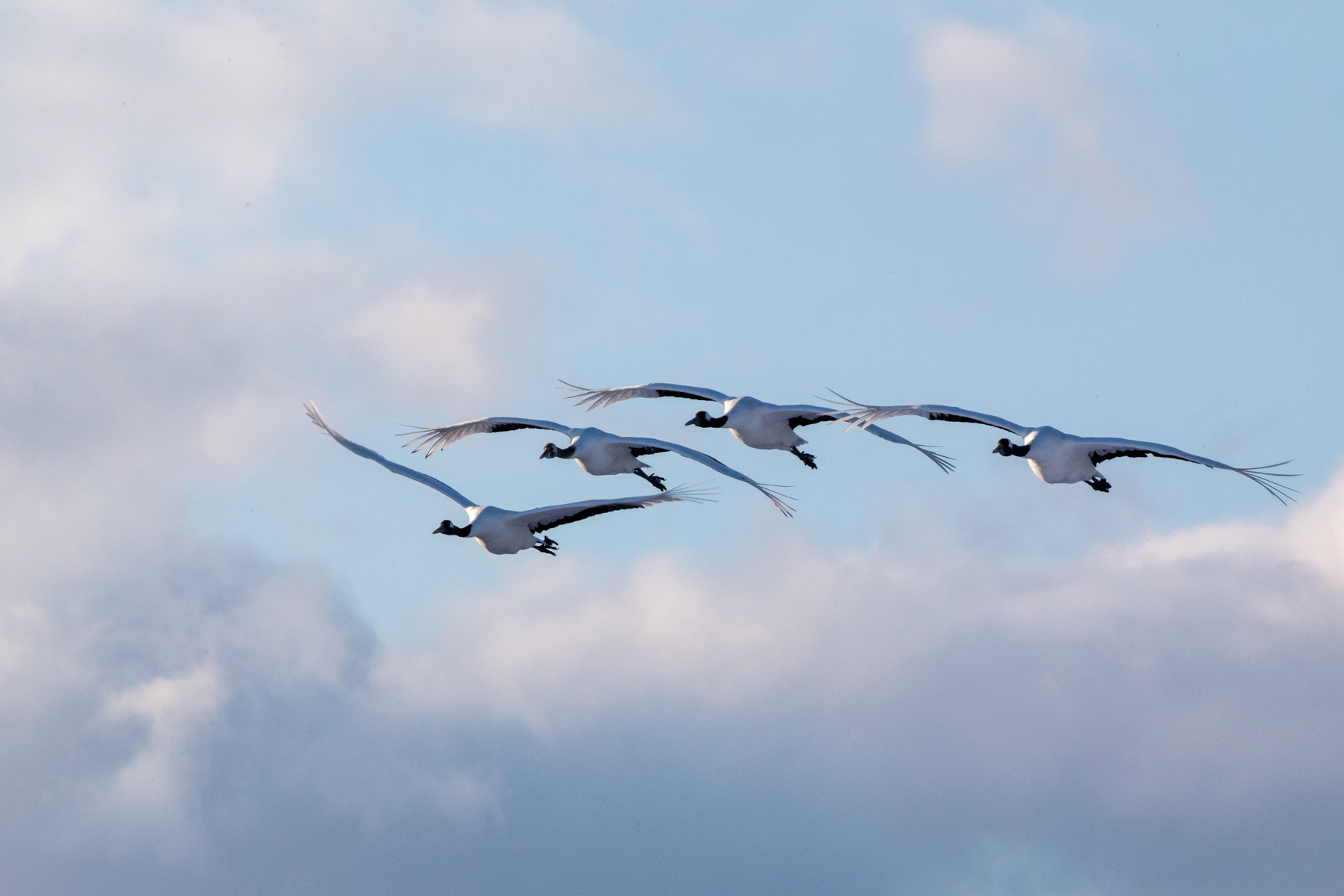
Red-crowned Cranes flighting to roost (image by Mark Beaman)
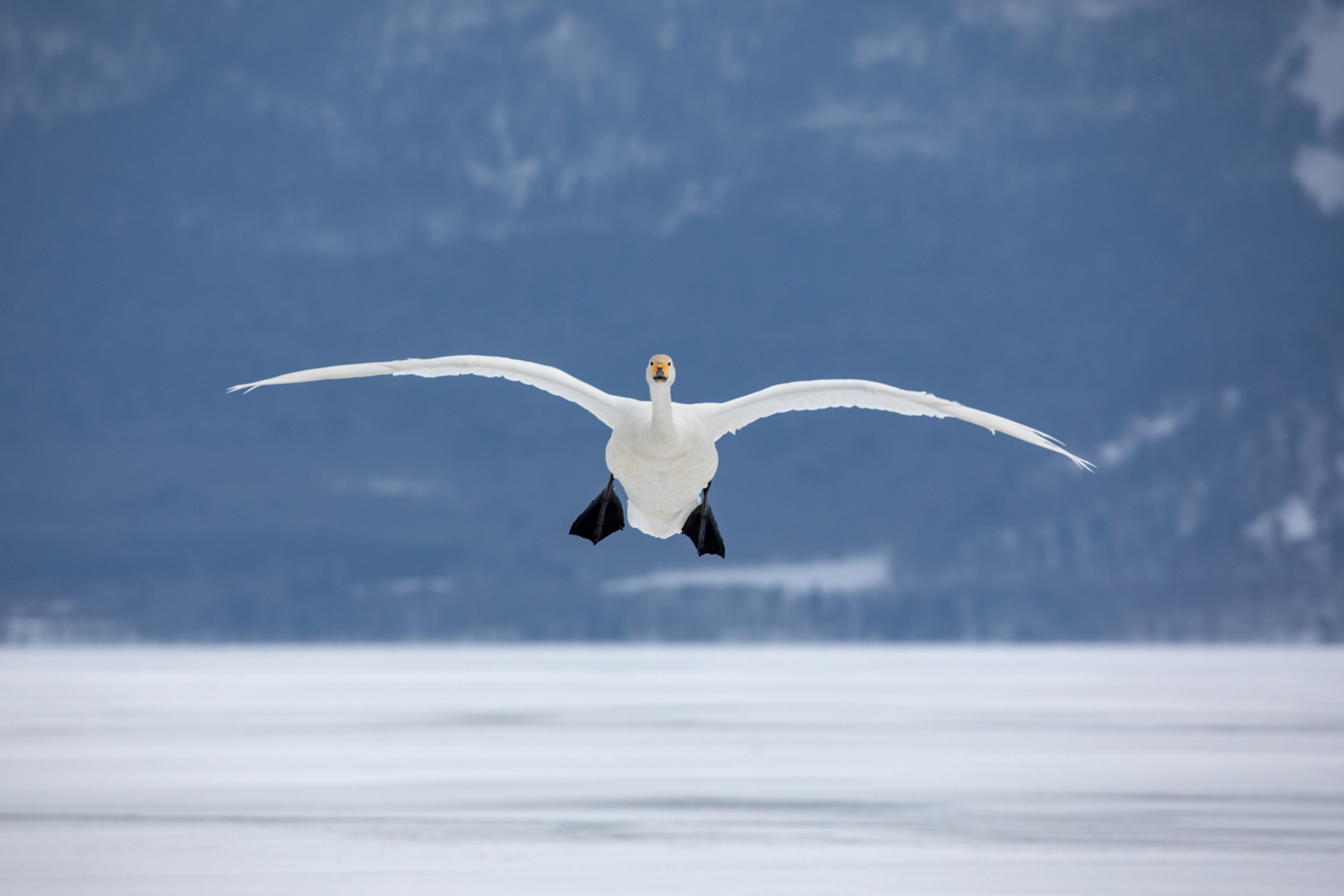
A Whooper Swan comes in to land (image by Mark Beaman)
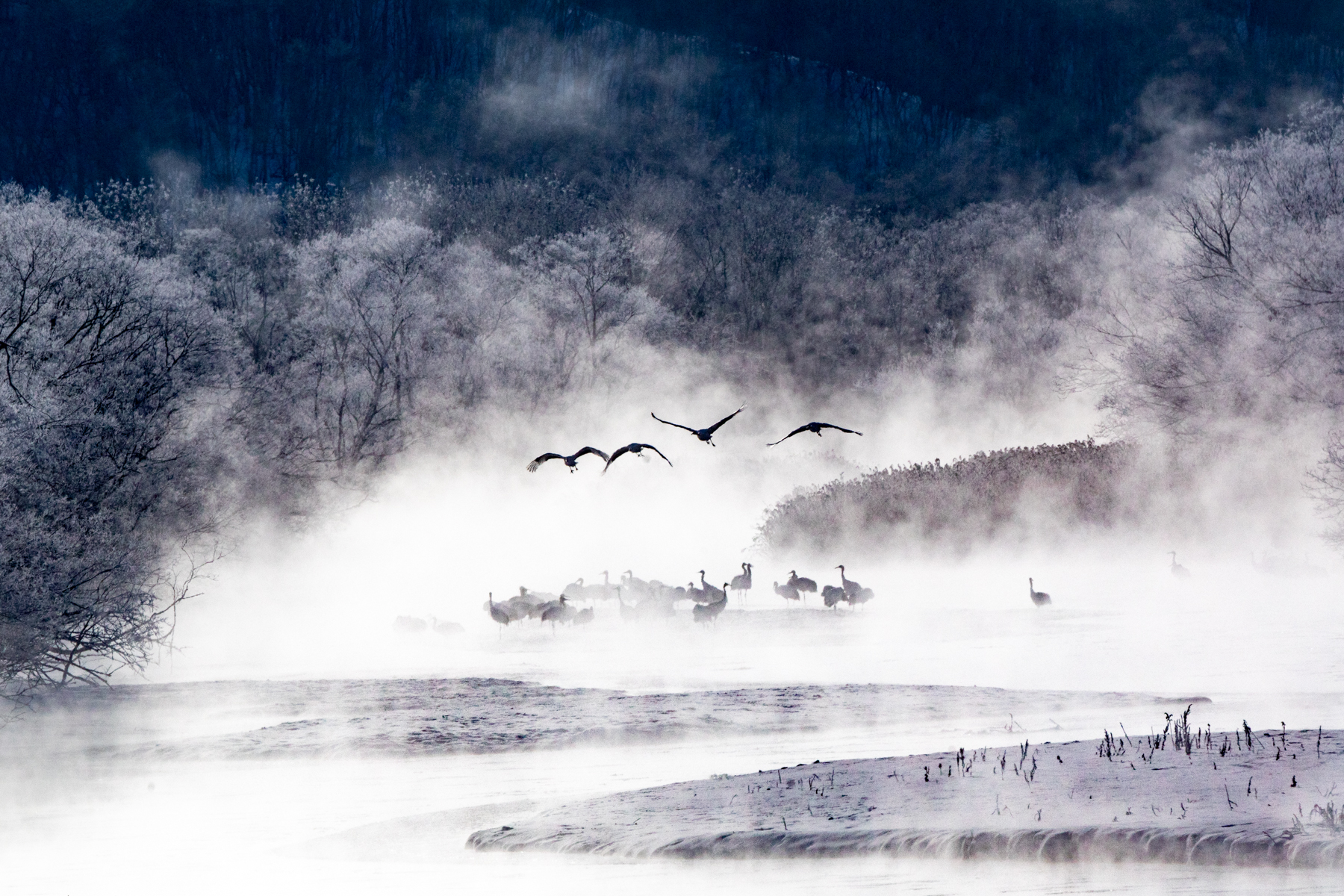
Red-crowned Cranes leaving their atmospheric roost at Otawa in Hokkaido (image by Mark Beaman)

Even a humble Mallard looks fantastic in Japan's winter wonderland (image by Mark Beaman)
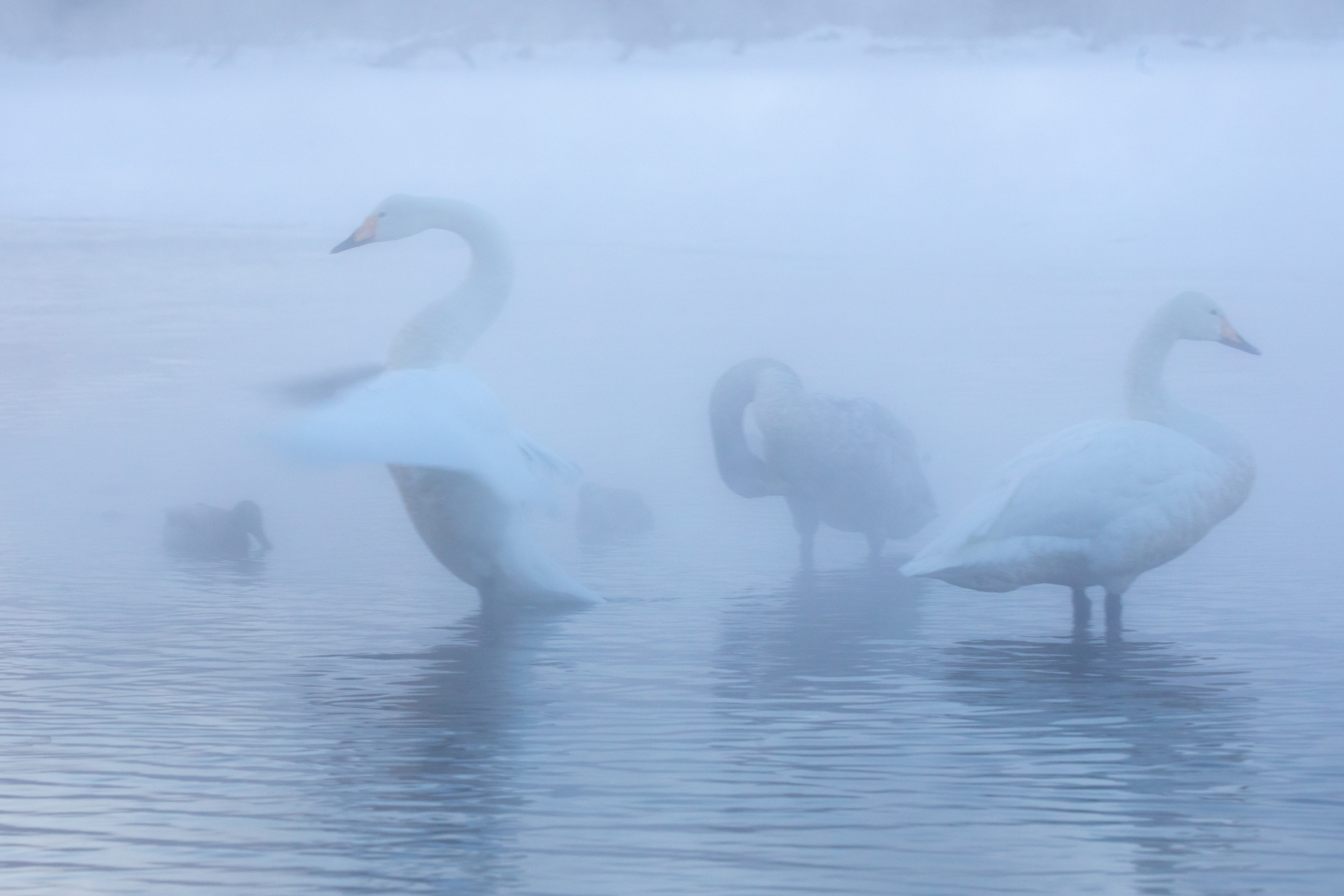
Whooper Swans in the mist (image by Mark Beaman)

A Snow Monkey grimaces with fear when challenged by a dominant adult (image by Mark Beaman)
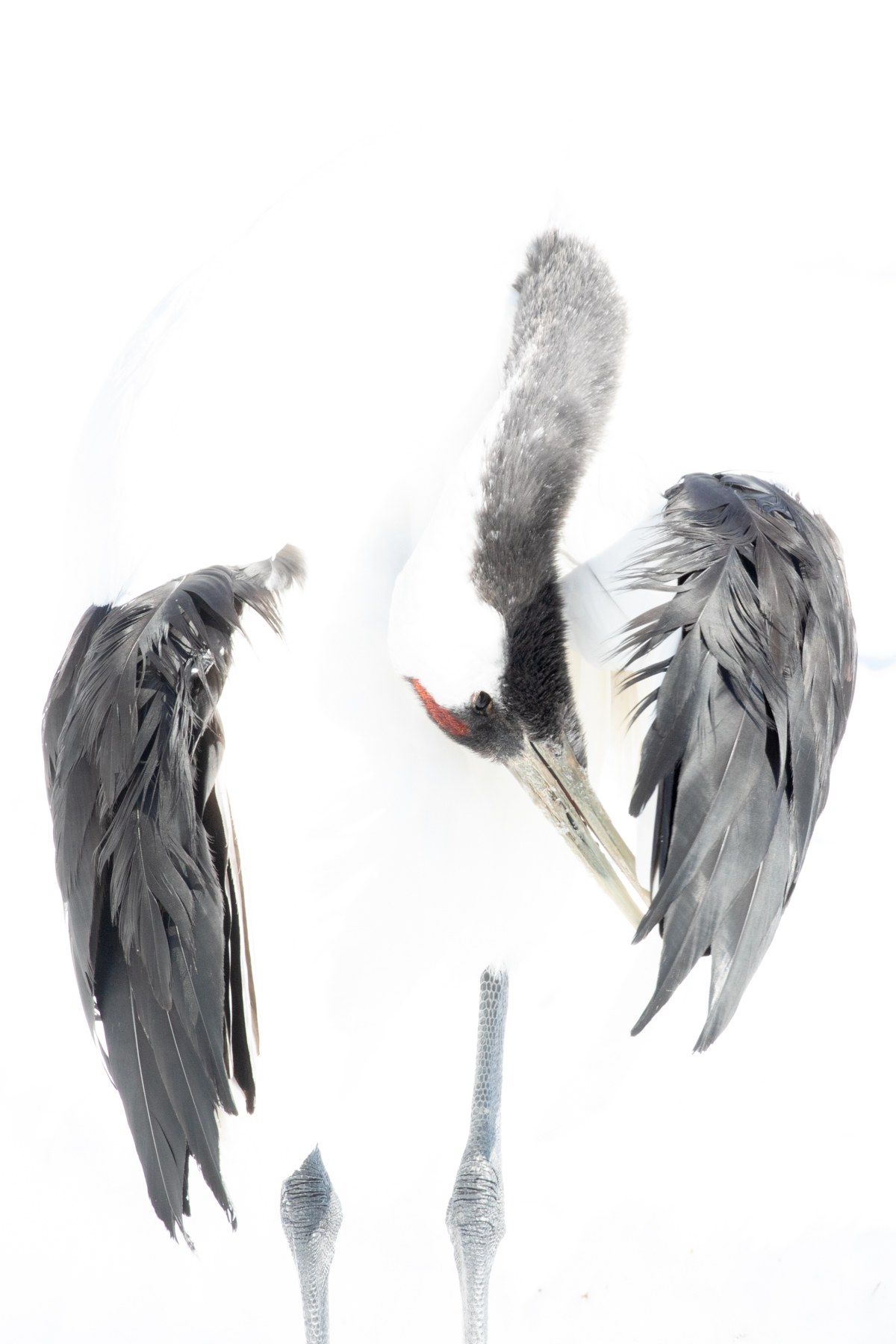
Red-crowned Crane detail (image by Mark Beaman)

Whooper Swans at sunset at Lake Kussharo, Hokkaido (image by Mark Beaman)
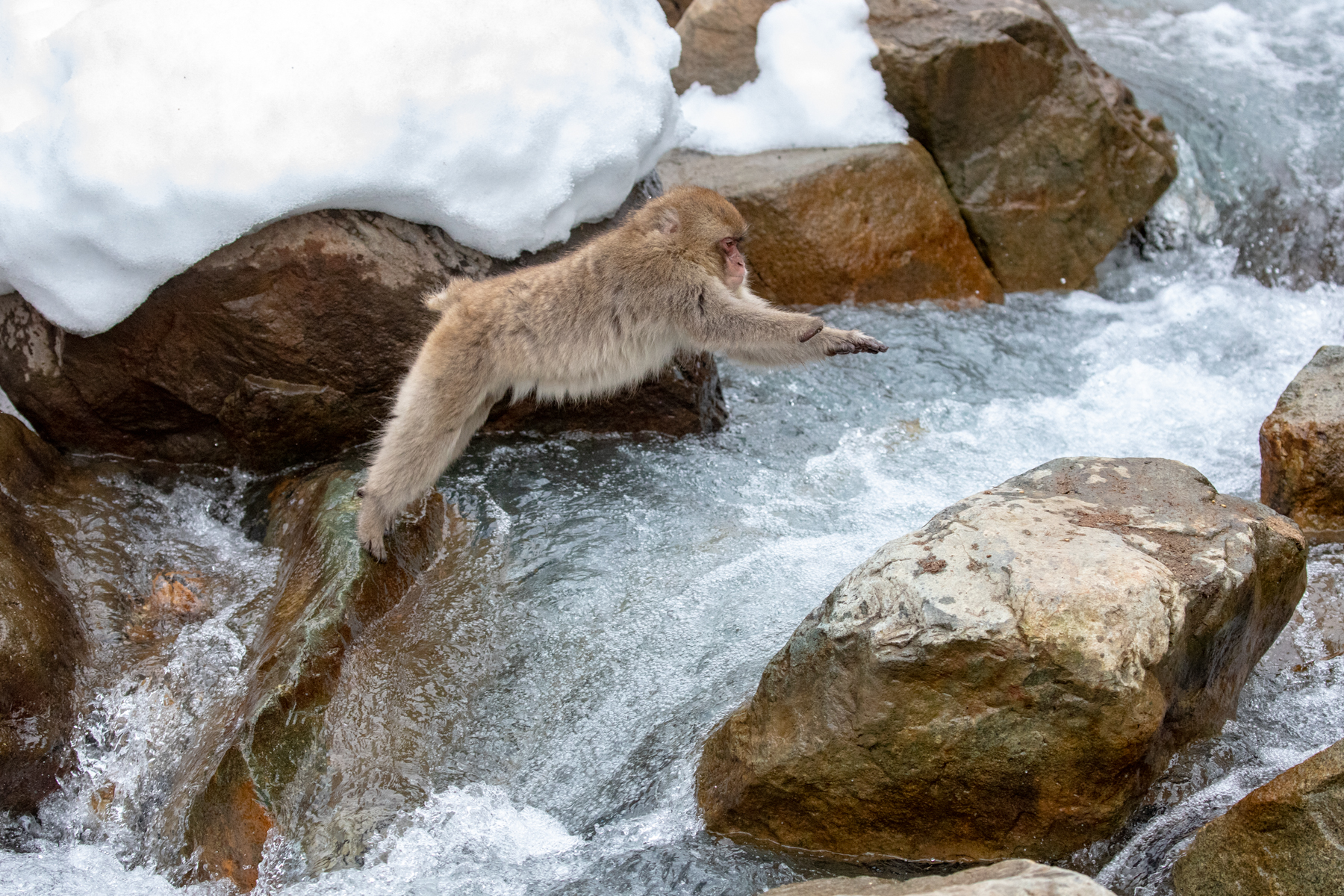
Snow Monkeys are good jumpers (image by Mark Beaman)
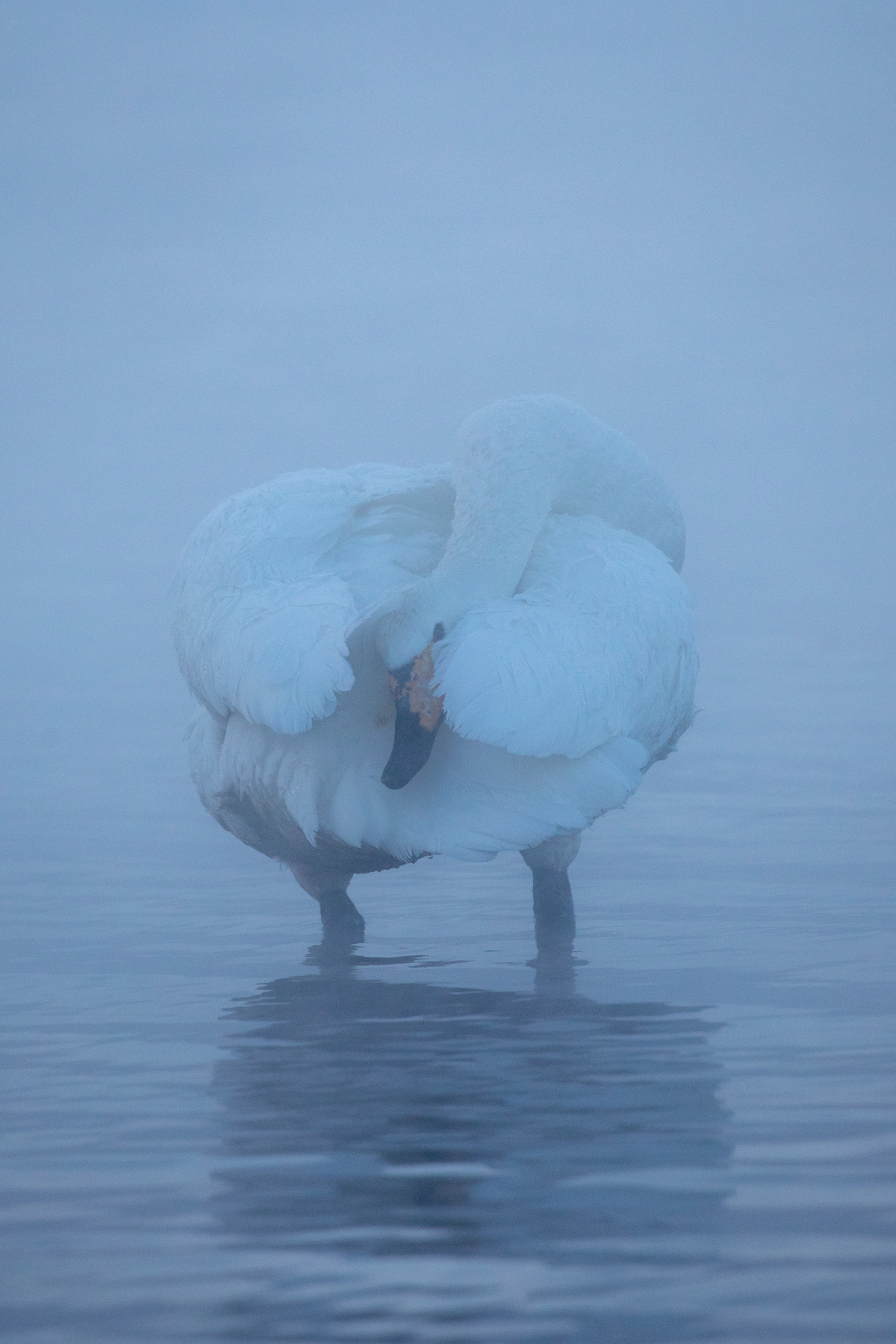
Misty Whooper Swan (image by Mark Beaman)
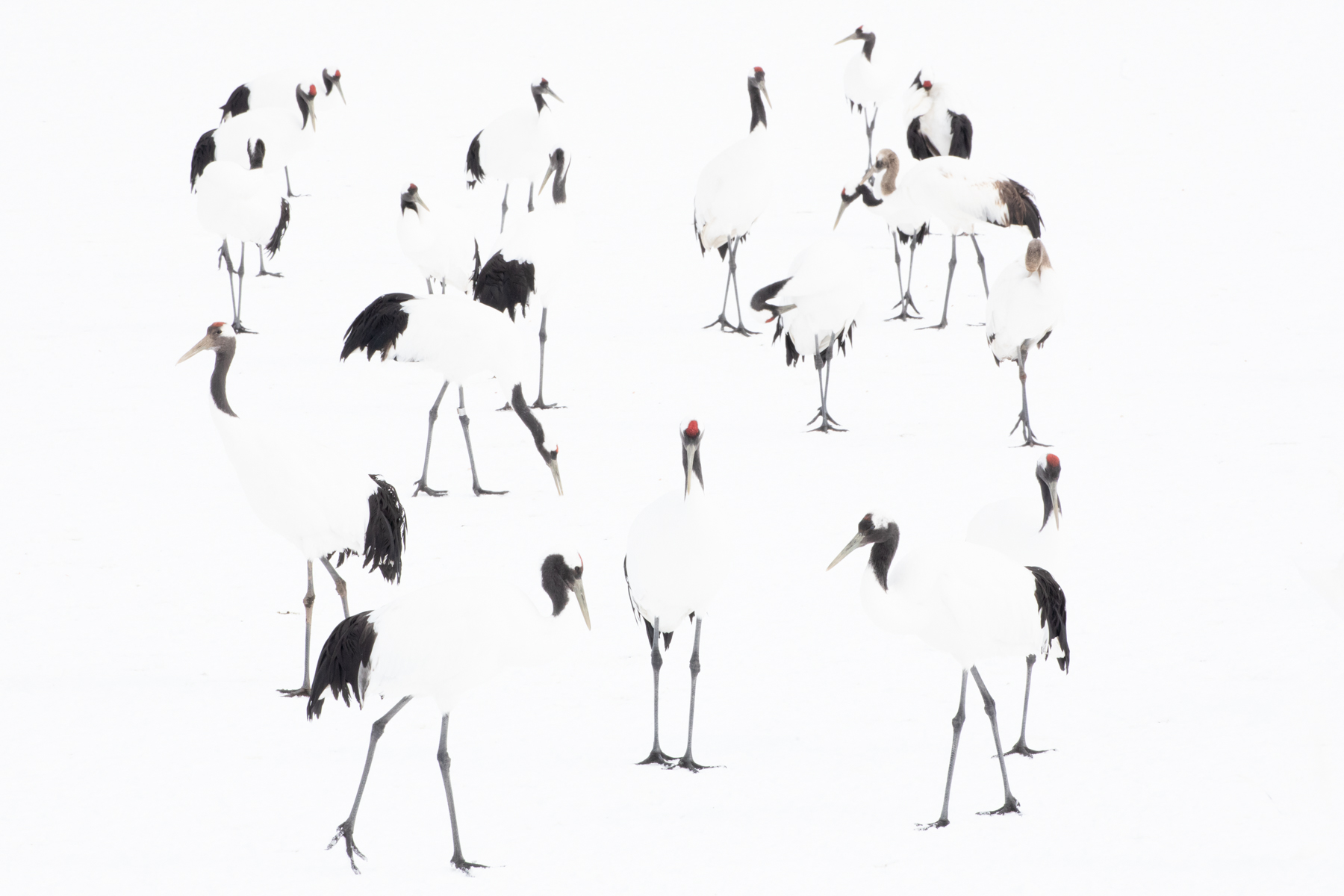
Red-crowned Cranes in Hokkaido, in the style of a Japanese painting (image by Mark Beaman)

Grounded sea ice in northern Hokkaido, with the Russian-occupied island of Kunashiri in the background (image by Mark Beaman)

Whooper Swans displaying (image by Mark Beaman)
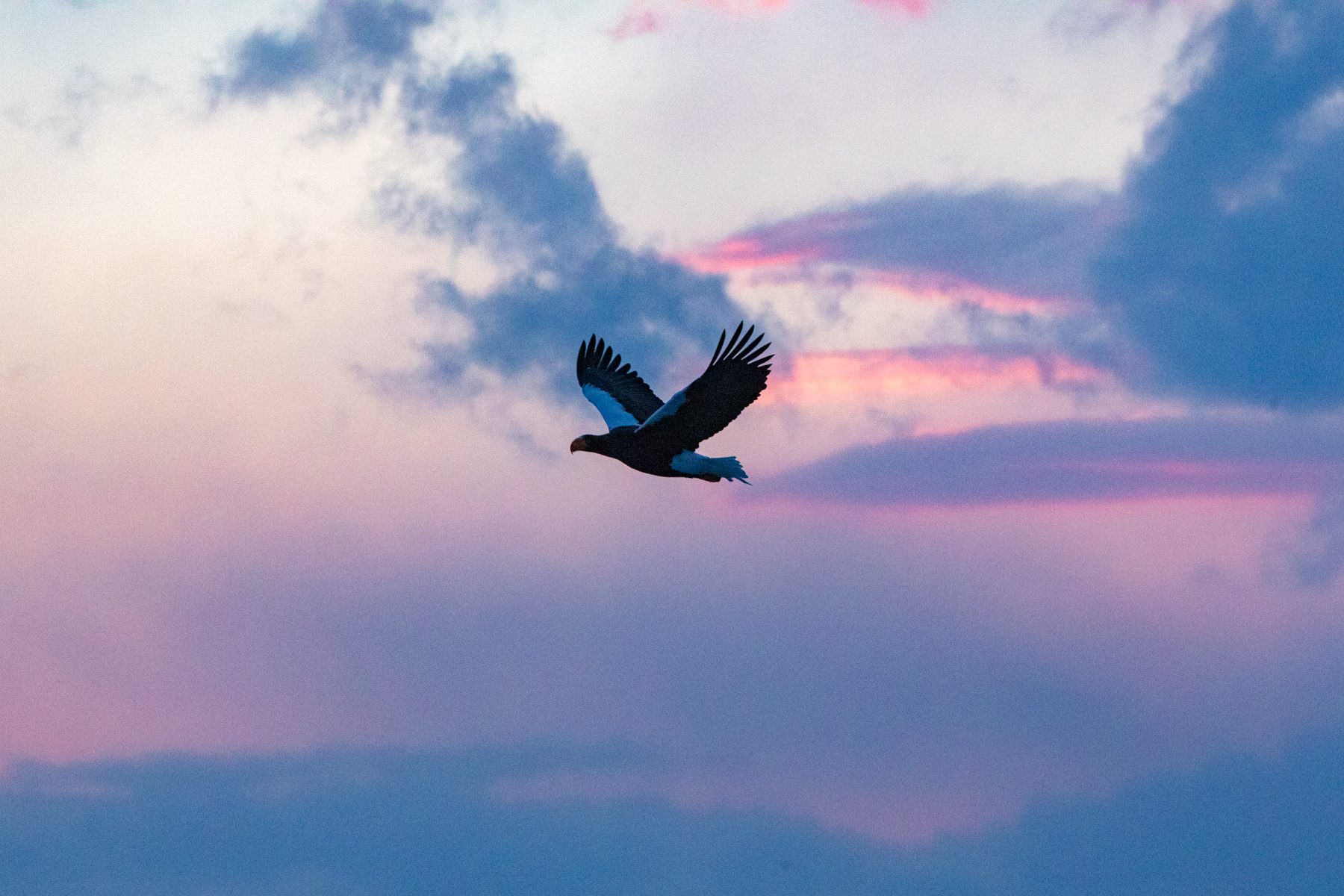
Eagle dawn (image by Mark Beaman)

A Blakiston's Fish Owl with a trout (image by Mark Beaman)

Sometimes those Red-crowned Cranes get up close and personal... (image by Mark Beaman)

Whooper Swans in the mist (image by Mark Beaman)

The enormous Blakiston's Fish Owl at Rausu in Hokkaido (image by Mark Beaman)

Steller's Sea Eagle with fish (image by Mark Beaman)

A pair of Ural Owls at their roosting tree in Hokkaido, Japan (image by Mark Beaman)

Red Fox on the prowl (image by Mark Beaman)
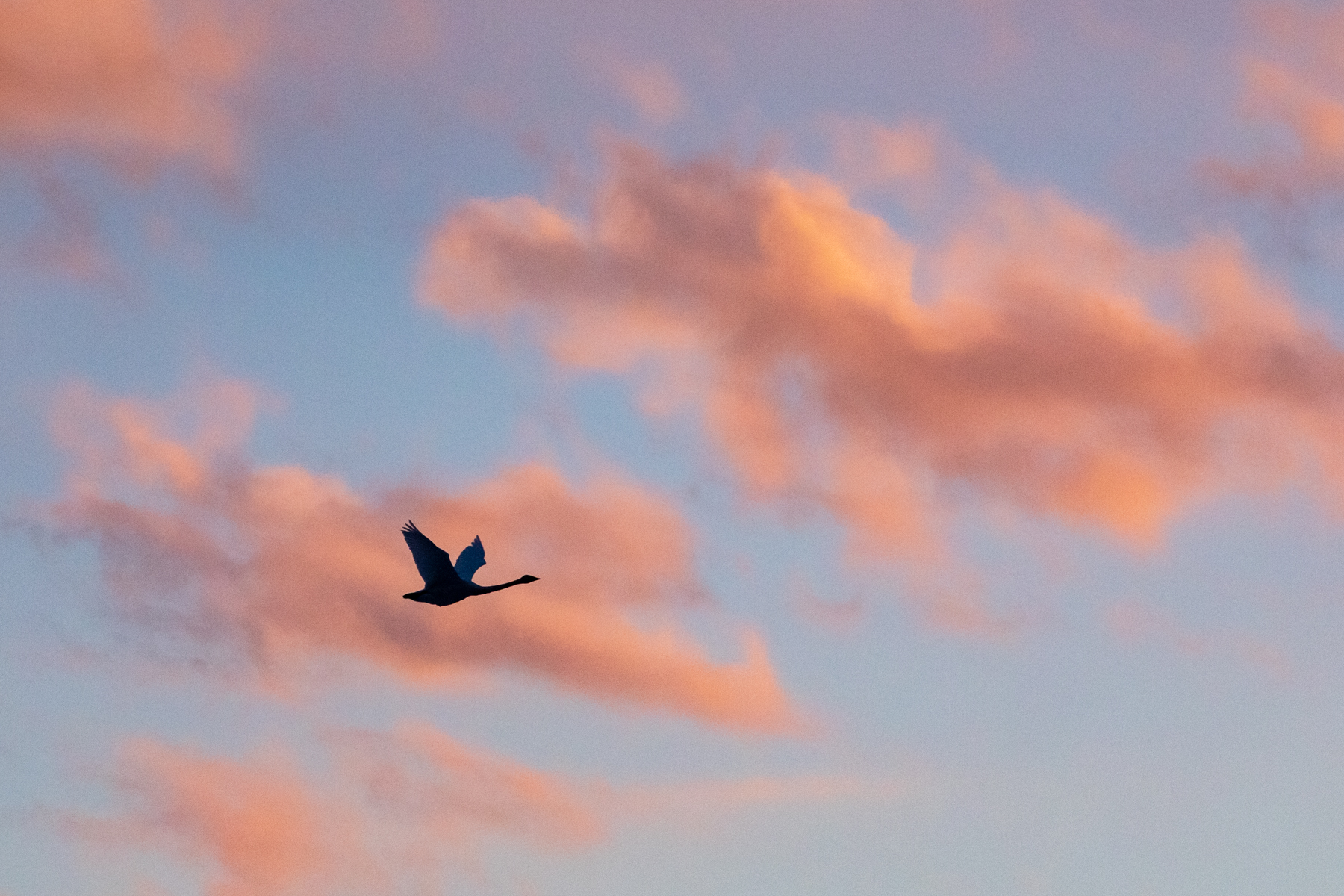
A late Whooper Swan heads for its roosting site at sunset (image by Mark Beaman)
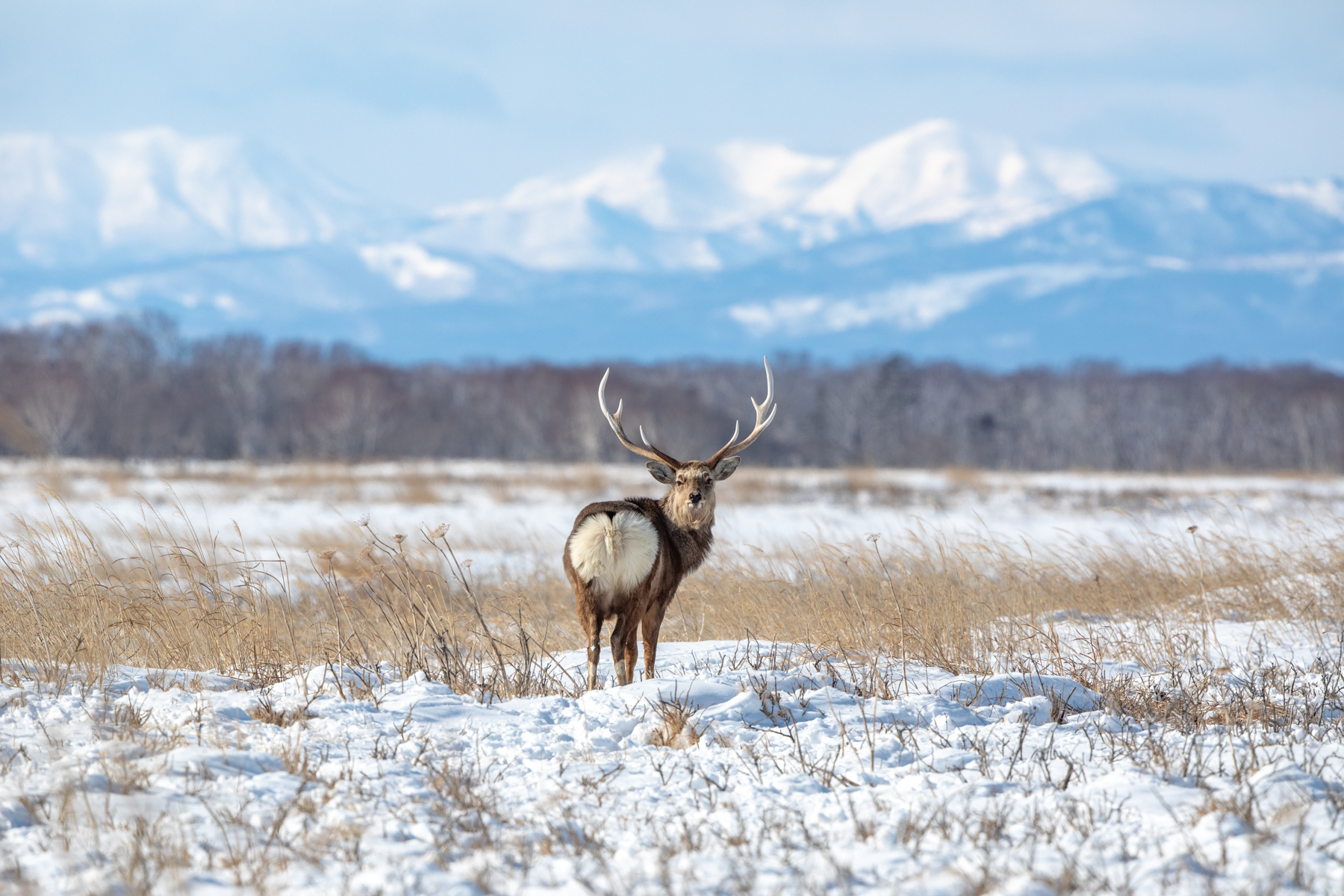
A male Sika Deer amidst Hokkaido's spectacular landscape (image by Mark Beaman)

Snow Monkeys often betray their feelings about the much larger monkeys watching and photographing them (image by Mark Beaman)

It is awesome to be so close to Red-crowned Cranes, even in flight (image by Mark Beaman)

Sika Deer on the march (image by Mark Beaman)

Hoar frost on an alder branch (image by Mark Beaman)
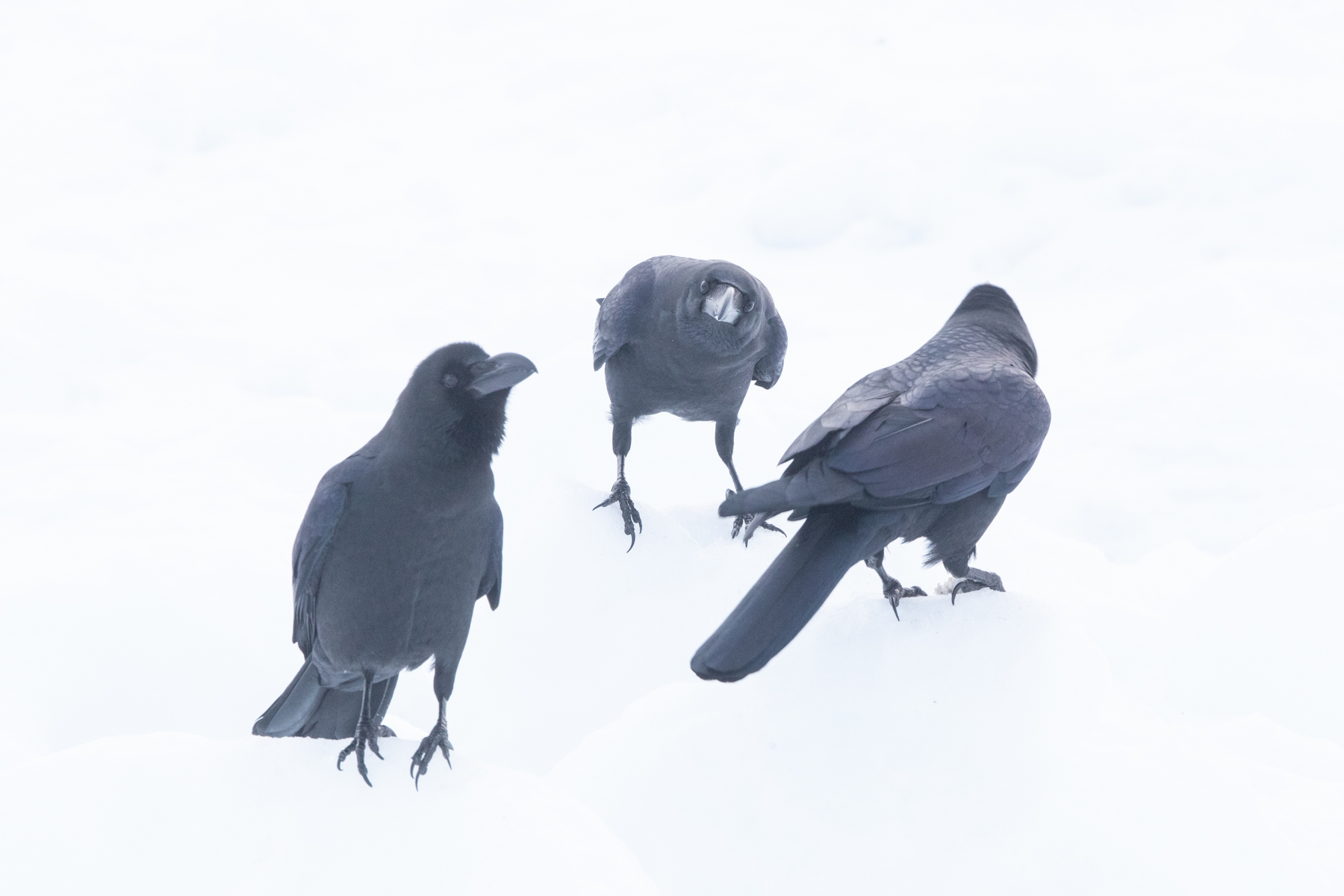
Large-billed Crow study (image by Mark Beaman)

Cranes motion blur at Arasaki, Japan (image by Mark Beaman)

Play fighting is a way of establishing and confirming social position in young Snow Monkeys or Japanese Macaques (image by Mark Beaman)

And you thought only humans dived into the swimming bath? (image by Mark Beaman)

Sika Deer rutting in Hokkaido, Japan (image by Mark Beaman)

Mother and baby on the move (image by Mark Beaman)

Steller's Sea Eagle amidst the ice (image by Mark Beaman)

A Blakiston's Fish Owl flies off with a fish. Rausu in Japan is the best place to photograph the world's largest owl (image by Mark Beaman)

The volcano Rausu-dake in northern Hokkaido, Japan (image by Mark Beaman)

Beautiful Lake Kussharo in Hokkaido, Japan (image by Mark Beaman)
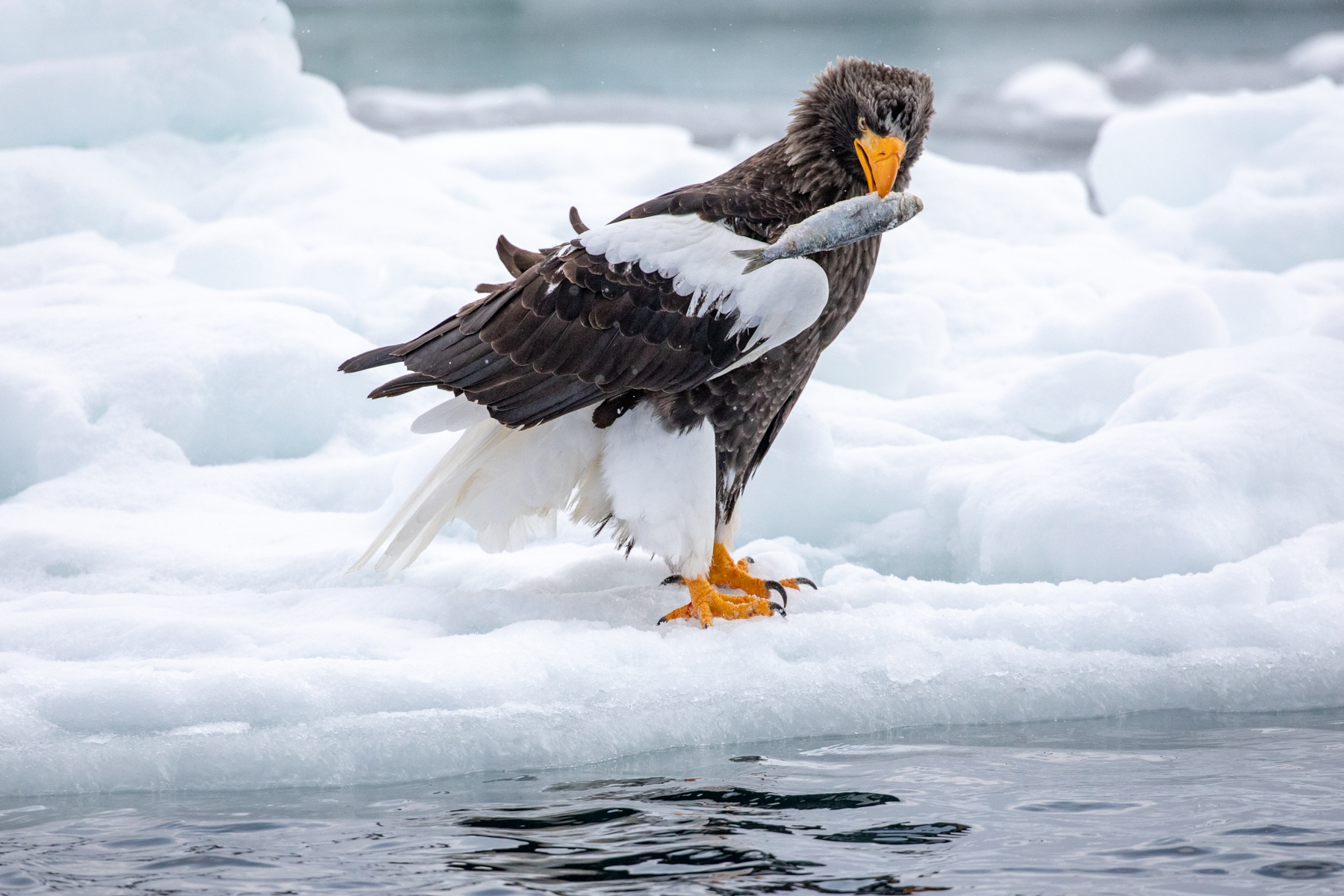
Steller's Sea Eagle with fish (image by Mark Beaman)

Hooded Creanes in flight (image by Mark Beaman)
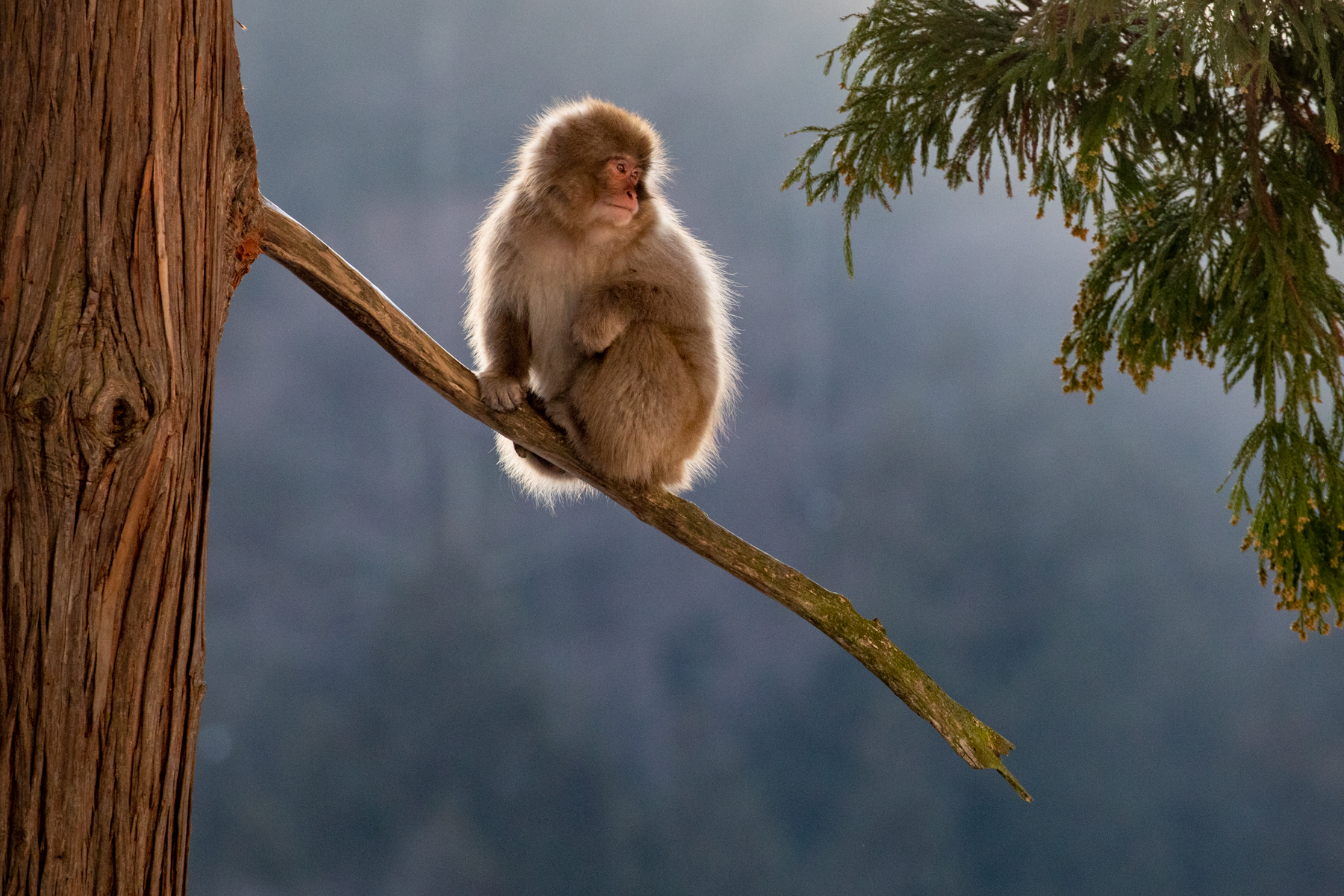
A backlit Snow Monkey near sunset (image by Mark Beaman)

A pair of magnificent Steller's Sea Eagles amidst the ice off Rausu, Hokkaido (image by Mark Beaman)

The dancing of the Red-crowned Cranes is one of the marvels of Hokkaido (image by Mark Beaman)
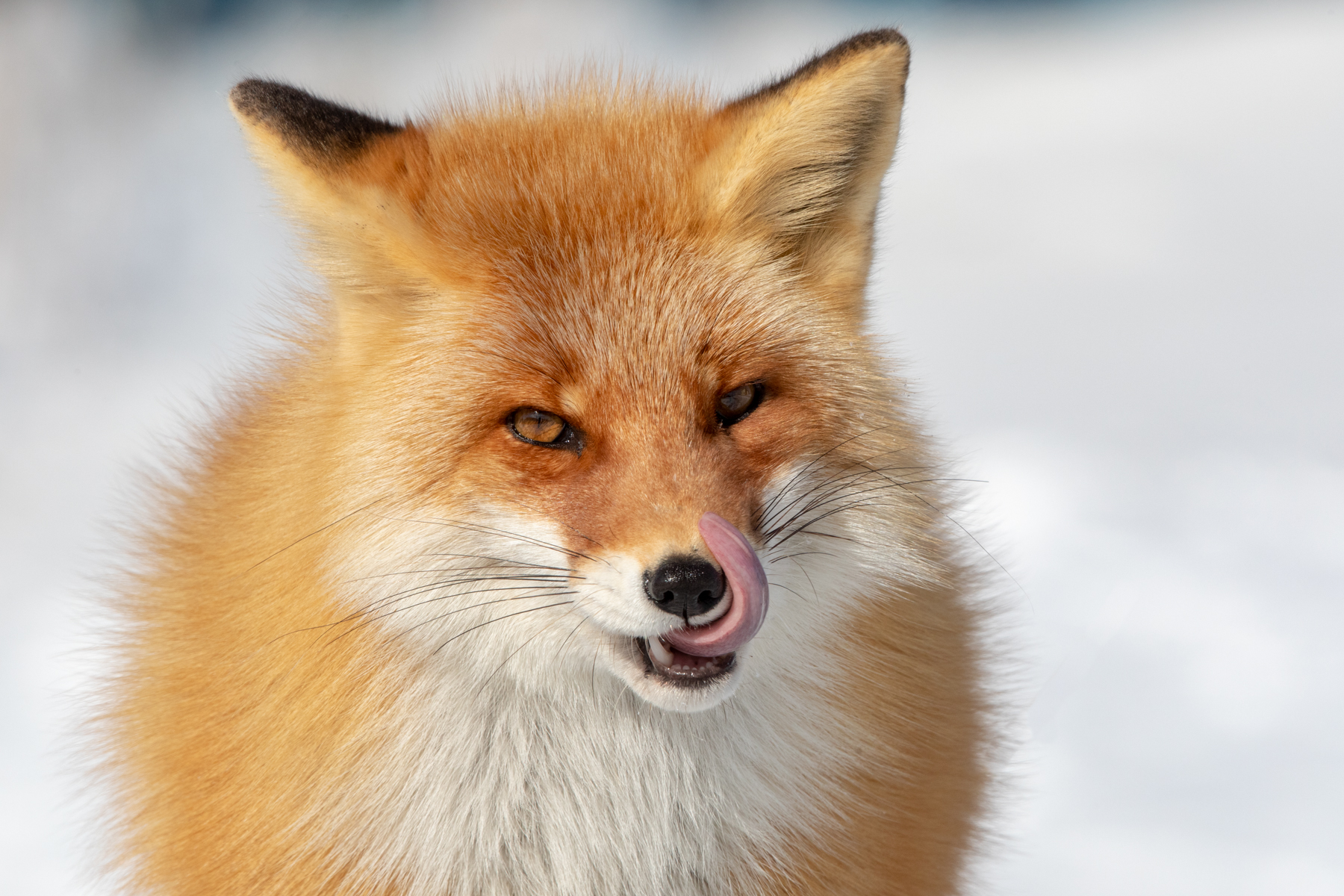
Portrait of a Red Fox (image by Mark Beaman)
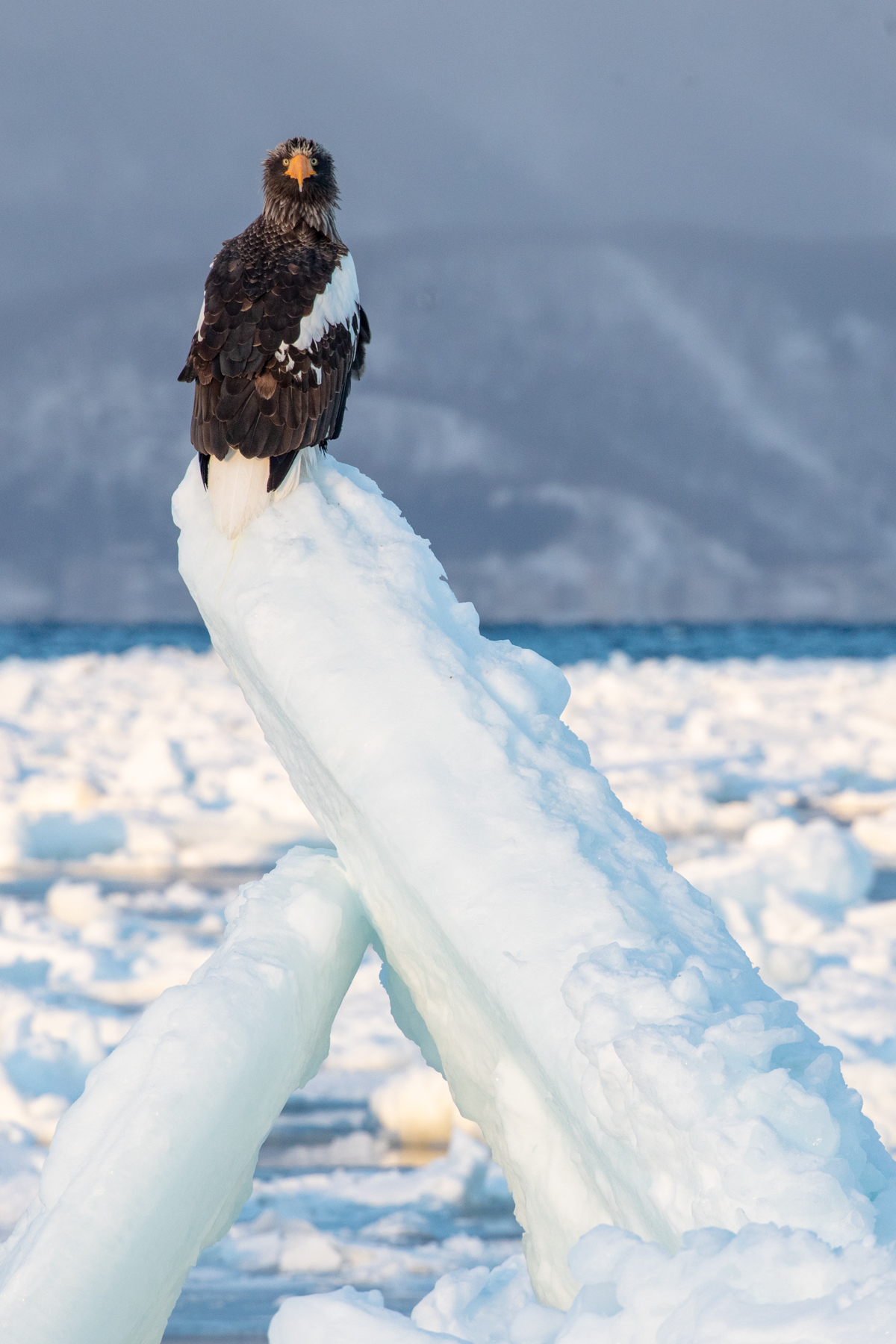
A Steller's Sea Eagle surveys its wintry domain from an upflung block of sea ice (image by Mark Beaman)

Whooper Swans displaying at Lake Kussharo, Hokkaido (image by Mark Beaman)

Steller's Sea Eagle motion blur (image by Mark Beaman)

A Steller's Sea Eagle plunges down to catch a fish (image by Mark Beaman)

An adult White-tailed Eagle dives for a fish (image by Mark Beaman)

A pair of White-naped Cranes display together at Arasaki, Japan (image by Mark Beaman)

Young Snow Monkeys love playing in trees ands saplings (image by Mark Beaman)
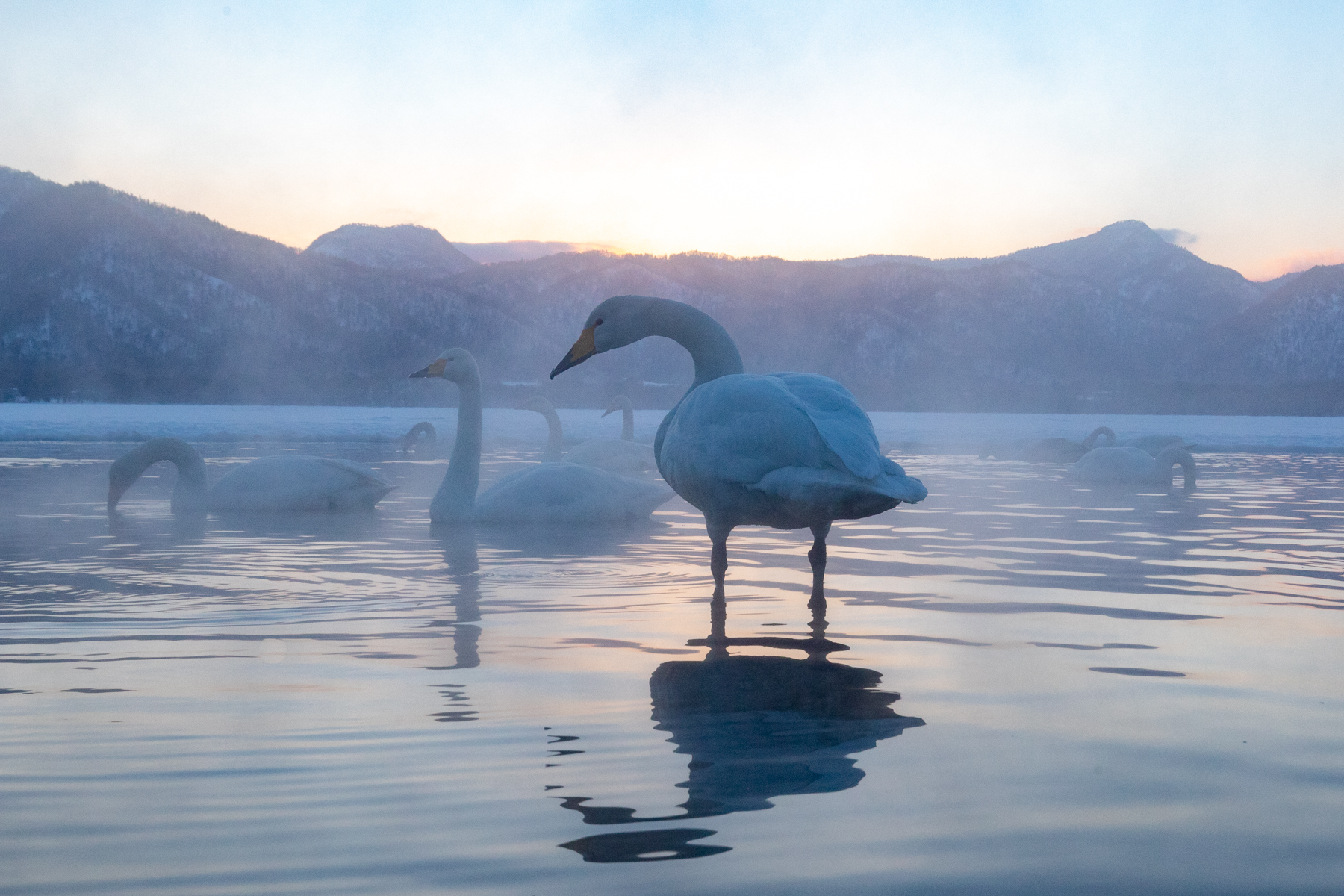
Whooper Swans at dusk at Lake Kussharo (image by Mark Beaman)

In winter Sika Deer often have to dig for food in the powdery snow (image by Mark Beaman)

A huge Blakiston's Fish Owl, the world's largest owl, watches from a riverside tree (image by Mark Beaman)

The beautiful Shinto shrine at Rausu (image by Mark Beaman)

Hooded Cranes motion blur at Arasaki, Kyushu (image by Mark Beaman)
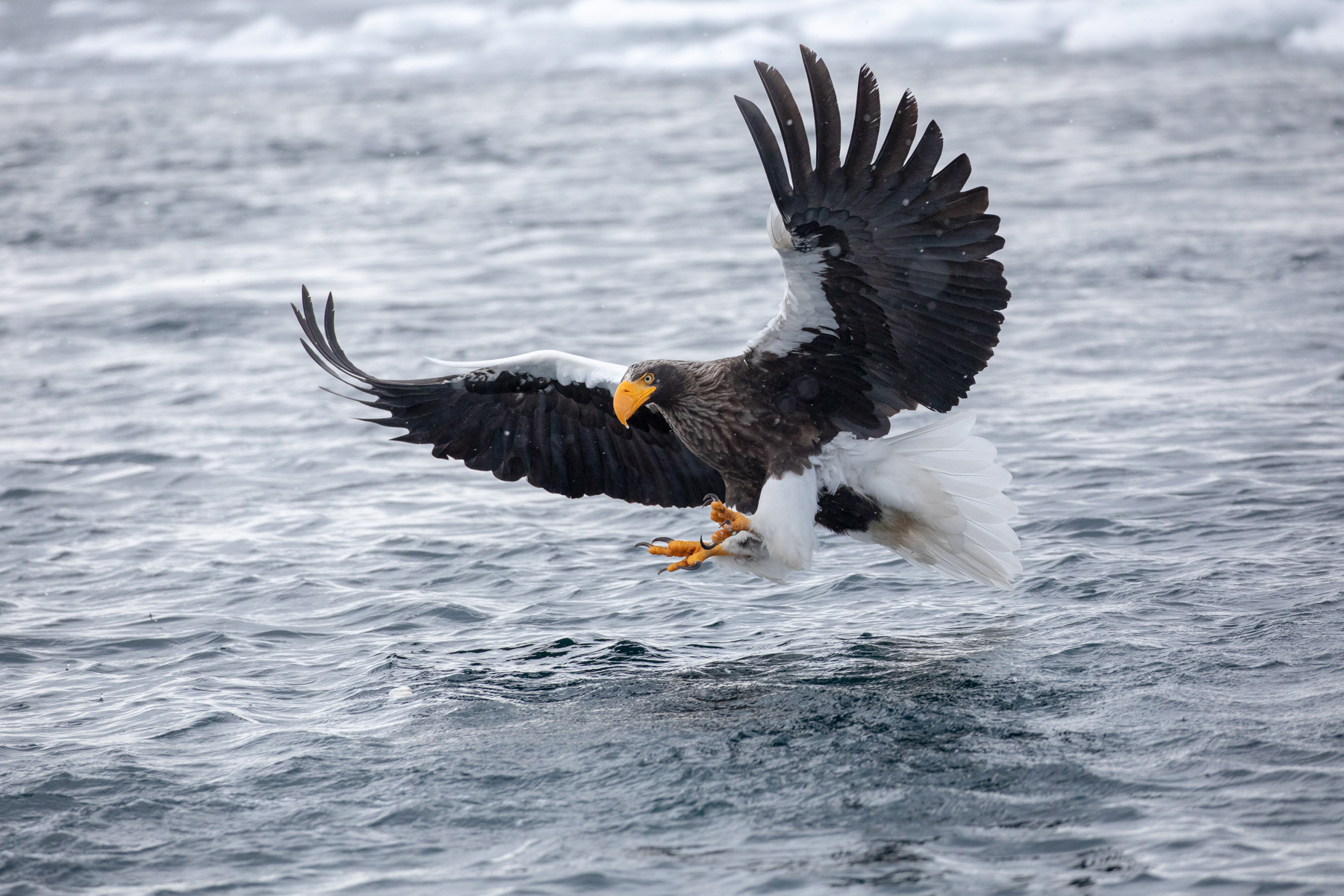
A Steller's Sea Eagle 'brakes' at the last moment as it dives for food (image by Mark Beaman)

Hokkaido mountain landscape (image by Mark Beaman)
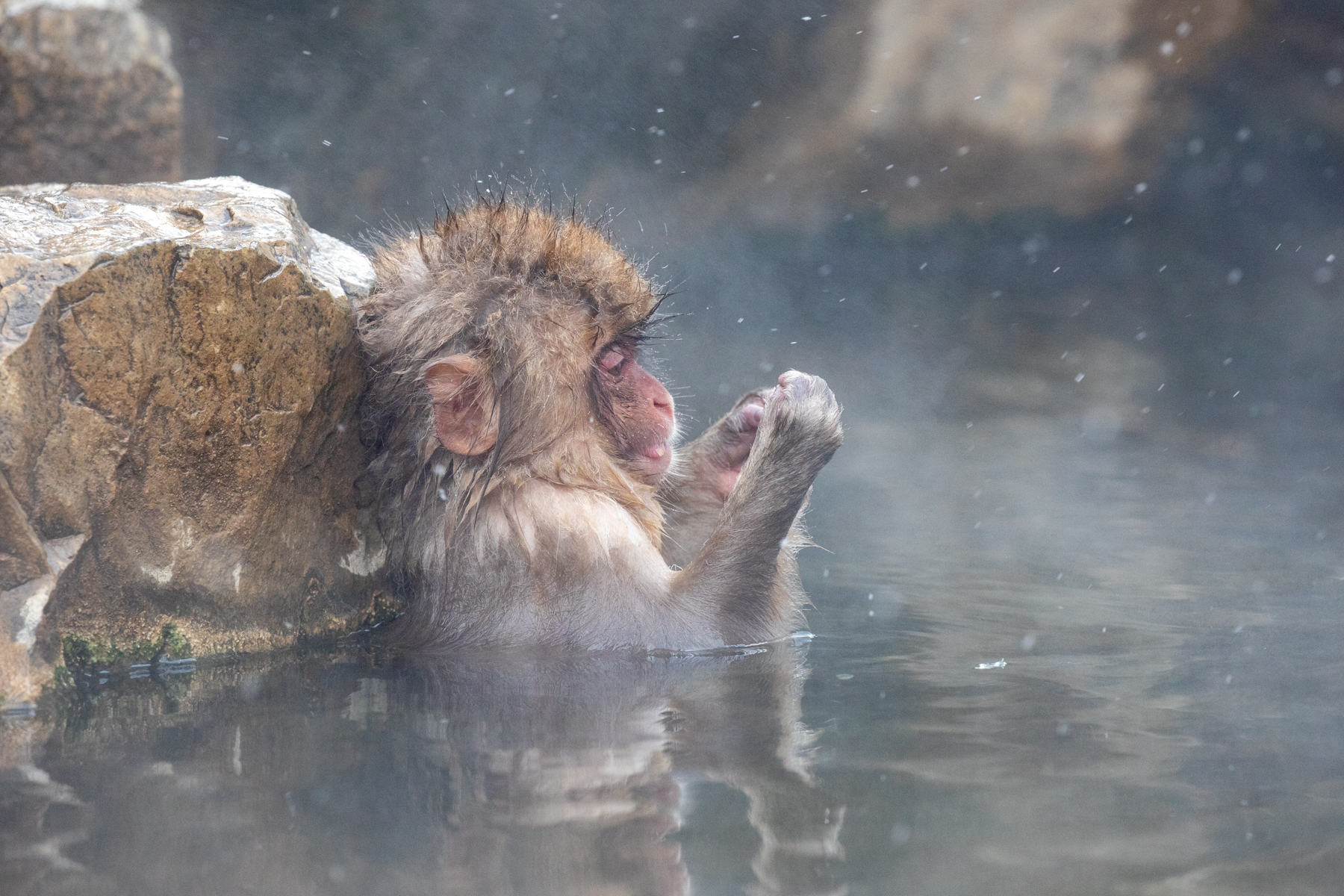
"How wonderful it is to be born a high-caste Snow Monkey and be able to visit the hot bath!" (image by Mark Beaman)

An adult White-tailed Eagle in flight is an impressive sight (image by Mark Beaman)

Some young Snow Monkeys look like strange little forest goblins (image by Mark Beaman)

Adult and immature White-tailed Eagles talon-grapple as they squabble over food (image by Mark Beaman)
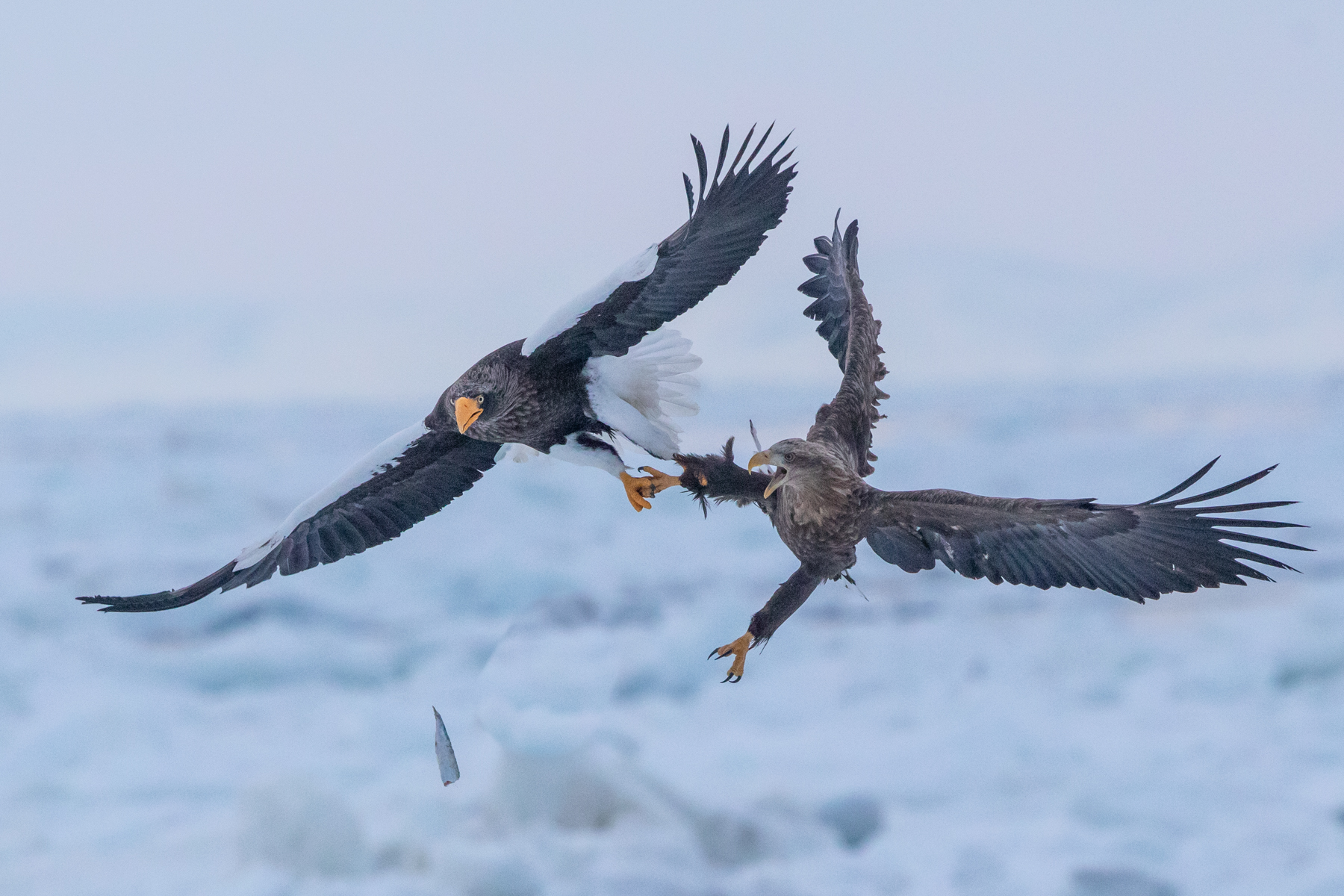
A Steller's Sea Eagle forces a White-tailed Eagle to drop a piece of fish by grabbing hold of its leg and talons! (image by Mark Beaman)
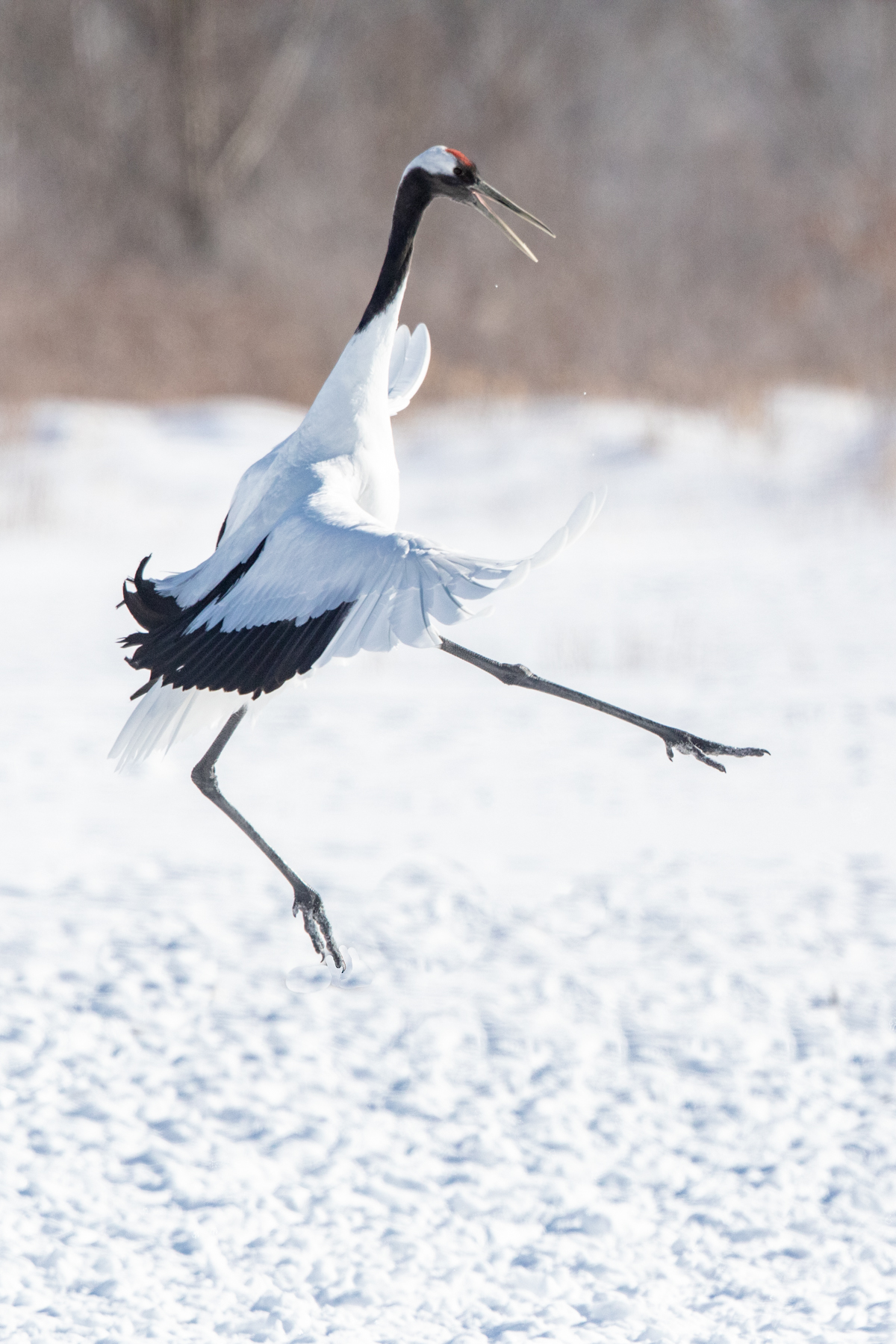
A dancing Red-crowned Crane hurls itself high into the air (image by Mark Beaman)

A young Glaucous Gull (image by Mark Beaman)
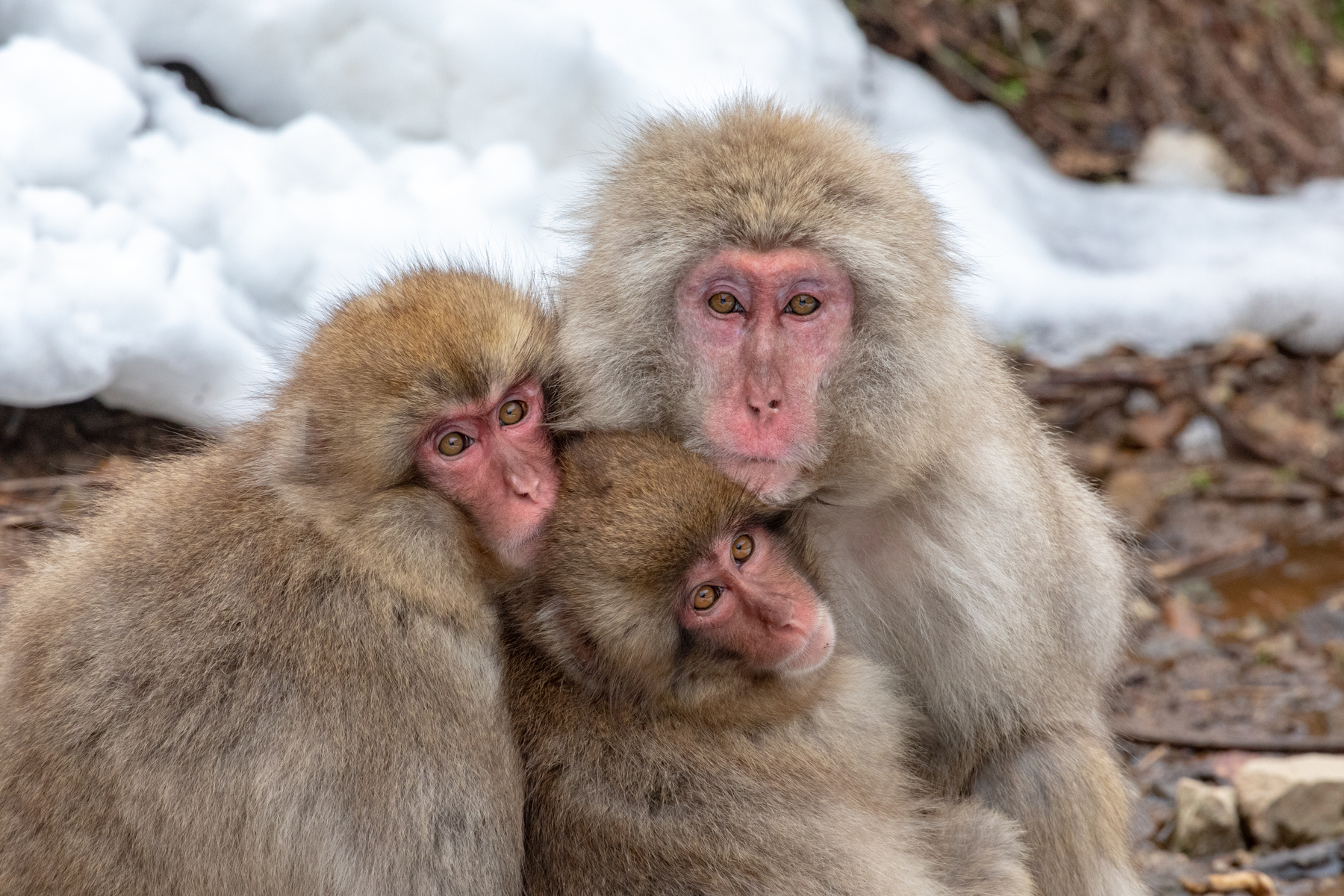
Snow Monkeys often huddle together for warmth in the cold winter of the Japanese Alps (image by Mark Beaman)
Our February 2019 Japan Winter Wildlife Spectacular photography tour kicked off with a flight southwards from Tokyo to the southernmost main island of Japan, Kyushu. As our plane approached Kagoshima we could see the smoking volcanoes that surround the city and also the complete lack of snow that is typical of the mild winters so far south, yet would be in total contrast to the rest of our Japanese journey.
From Kagoshima we drove northwards to the coastal lowlands at Arasaki, home to the largest surviving concentration of the endangered White-naped Crane and the somewhat more numerous yet still vulnerable Hooded Crane. Even as we approached Arasaki, flocks of cranes were dotted across the fallow paddyfields.
Our minshuku (Japanese guesthouse) at Arasaki was right in the midst of the action. Thousands of cranes could be seen and even photographed from the minshuku windows, there was a constant stream of birds flying over and at night the soft bugling of the cranes lulled us to sleep. This small minshuku was a good introduction to some traditional Japanese ways of doing things, including leaving one’s shoes outside the tatami-floored rooms and corridors, not using the toilet (‘benjo’) slippers when outside the loos and the like. As almost everywhere we went in Japan, food here was amazingly varied and indeed a bit puzzling at times, stretching our guide Otani-san’s powers of English to the limits as group members asked what this was, and that, and that.
The weather during our stay was mild, often overcast and sometimes rainy, making for more challenging photography than the previous year when it had been sunny, cold and even lightly snowing at times. Nonetheless, there were plenty of great opportunities for individual studies of standing and flying birds (including truly spectacular displaying White-naped Cranes), flocks on the ground and flying over, sunset shots, flock motion-blurs and, most spectacular of all, the huge ‘blast-off’ on our second morning where perhaps 7000 cranes took to the air at once in a dense mass of wings and motion, and almost deafening noise.
As well as the famous cranes, which included a few rather lost Sandhill Cranes that had failed to cross the Bering Strait en route from their Siberian breeding grounds to their usual winter quarters in western North America, we also had opportunities to photograph Black Kites, Eurasian Spoonbill, the endangered Black-faced Spoonbill and various ducks, including large numbers of Chinese Spot-billed Ducks.
After returning to Tokyo our ‘winter’ Japan experience began in earnest. After making our way through the Tokyo urban rail network, we took the wonderfully rapid Shinkansen (known in the west as ‘bullet trains’, but simply meaning ‘new main line’ in Japanese) to Nagano in the Japanese Alps of central Honshu. From there it was just a short hop to the spa town of Yudanaka, our base for the next three nights, where we stayed at a very friendly ryokan (Japanese inn).
For the next two and a half days we immersed ourselves in the world of the Snow Monkeys of the Jigokudani reserve. These wonderful apes, scientifically known as Japanese Macaques, long ago learned to use the natural hot springs in the area, just as so many humans do, and as a result became world-famous. During our visit it was relatively mild for the time of year, so there were never large numbers of monkeys in their ‘onsen’ (Japanese for natural hot spring bath), but there were enough and we all enjoyed their antics as they relaxed, pondered the meaning of life, groomed each other and, all too often, squabbled over their places in the hierarchy. Indeed Snow Monkeys have a pretty rigid ‘caste’ system where position on the social ladder is determined at birth (by the ranking of the mother), so woe betide any lower class rascals that dared to try and share the nobility’s bath!
Photographing the Snow Monkeys is not just about the bathing monkeys, however, and we all enjoyed watching and photographing them huddling together for warmth (like strange little people in thick fur coats), picking over each other to remove fleas (and eat them!), jumping streams or, of course, fighting. The youngsters were special fun, often looking like little goblins, or perhaps Gollum, with their wizened faces. The youngsters loved to play, including climbing up saplings and small trees, often falling off but never seeming to be injured. They even amused while feeding as they climbed through holes in tree trunks or got up to other amusing and highly photogenic antics. Even the hot pipes that run through the area, taking geothermally-heated water to the human ‘onsens’ lower down the valley provide impromptu heating stations for the monkeys, who love to lie on the pipes warming those supposedly private bits that every monkey prominently displays.
Snowfall during a visit to Jigokudani is of course the icing on the cake, but it is a real lottery. For our first two and half days there was none, but frustratingly snow was forecast for the day we were due to leave! Seeing how disappointed our group was, Otani and I checked train times and worked out we could fit in a short session at the reserve if we travelled direct to Nagano afterwards. And so it was that, with the snow falling, we headed back to the ‘onsen’ for a final session with those remarkable monkeys.
After retracing our steps to Haneda airport we flew northwards to Kushiro, the largest city in eastern Hokkaido, Japan’s northernmost island. The temperature was a balmy minus 14 when we landed, a harbinger of things to come! Those winter clothes were about to earn their keep!
Next morning we were out before dawn as we headed to the famous (nay, infamous) Otawa bridge. Here many Japanese Cranes roost in the river, which is kept a bit warmer by some geothermal activity in the area. Many beautiful ‘landscape’ images of the roosting cranes have been taken here, combined with the hoar-frost-covered, riverside trees , the steam rising from the river and the bluish, pinkish and golden tinges produced at dawn and sunrise. However, there is a toll to pay, and that is the intense cold while you wait, and wait, for the scene to evolve, and you never know in advance how it will work out on any given day! This particular morning was as extreme as it ever gets at Otawa, with temperatures at least minus 26 on the bridge (and some folk measured minus 27 or 28)! All the many photographers there looked like Polar explorers of a bygone era, complete with hoar frost-covered eyebrows and the like! Some of us had to beat a retreat to the minibuses, understandably, but for those who could stick it out the steam eventually started to disperse and the shapes of cranes started to appear in this other-worldly scene. Soon small groups were flighting out from the flock, making for some very special images.
Mercifully it soon warmed up considerably and we spent the next couple of days enjoying the crane feeding stations at Tsurui and Akan, and also the flight-line points en route to Otawa. Red-crowned (or Japanese) Cranes are surely the most elegant and beautiful cranes on earth, and that striking combination of pure white and black plumage, combined with their red crown patch, goes perfectly with the snowy winter landscape of Hokkaido.
Every photographer wants to get superb images of the Red-crowned Cranes and we all spent ages trying to get that perfect shot of them hurling themselves into the air as they danced, throwing their heads back and ‘bugling’ or flying in and alighting with their wings outstretched. It was all easier said than done, but we had enough time to keep on shooting until the results were in. Likewise on the flight lines, where the cranes look stunning when they fly close, especially in the late afternoon light, but not so good when flighting behind trees. It was all a case of persistence pays.
From the land of the cranes it was on to Nakashibetsu, where we spent the night at a truly lovely ryokan with superb rooms and a wonderful banquet-like dinner, not to mention the superb ‘onsen’. The highlight here was a first crack at photographing the impressive Blakiston’s Fish Owl, albeit through glass, but we also enjoyed the beautiful scenery and the Great Spotted Woodpeckers, Eurasian Jays, Brown-eared Bulbuls, Eurasian Nuthatches and various tits (chickadees) that visited the feeders.
All too soon we continued north to the rather remote fishing port of Rausu on Hokkaido’s northeastern coast. Rausu is flanked by high, snow-covered mountains, the scene dominated by the huge dome of the Rausu-dake volcano. Across the sound, the southernmost part of the icy Sea of Okhotsk, is the Russian-occupied island of Kunashiri (known as Kunashir to the Russians), also punctuated with tall volcanoes like most of the Kuril Islands. This spectacular place was to be our base for the next four nights, and we were delighted to see sea ice offshore, which would make all the difference to our upcoming sea eagle photography.
Initially we stayed at Washi-no-yado, undoubtedly the most famous minshuku in Japan as far as wildlife photographers are concerned. It is here that every night the minshuku owners put out fish for the resident pair of Blakiston’s Fish Owls, which in turn attracts wildlife photography addicts from all over the world. We were able to photograph these huge owls, the largest in the world, both from our rooms and from the restaurant area, and we were blessed with a first visit from one of the owls as early as 1740 (5.40pm), followed by other visits later in the night. Getting good images here requires synchronizing your camera with the strobe light illumination and flight shots are definitely a challenge at the 1/80th of a second one is forced to use! However, once the owls are down at the ‘trout pool’ you can get great shots of the fishing birds, often with wings outstretched, and some of us had great captures of these magnificent owls with trout in their bills or in their talons. The only downside is the fact the owls are often very badly behaved and can decide to make their admirers stay up all night in order to have several sessions with them! You just can’t find reliable wildlife these days can you?
The greatest wildlife photography glory of Rausu is, however, the winter gathering of the huge Steller’s Sea Eagles and somewhat smaller White-tailed Eagles that migrate south from Russia to feast on capelin, a migratory fish that is also very important to the fishing fleet of Rausu.
Over the coming days we made a number of boat trips out to the sea ice to admire and photograph these magnificent creatures. The eagle boat trips have become an important part of this little town’s winter economy and a number sally forth two or three times every day. We took trips both at dawn and later in the morning in order to experience the full range of photographic situations. Personally I love the atmosphere at sunrise and after when the sun is low in the sky and the light soft and golden, but later on you can get the ISO down while still getting sharp shots, so doing both kinds of trip works out very well.
At first there were few eagles about, as we arrived in the dawn light, but as the pink-orange sun rose over Kunashiri they start to land around our boat, often perching on ice pinnacles to provide atmospheric shots, or flying against the blue-pink sky and orange-tinted clouds. Truly wonderful!
Soon enough there were several hundred Steller’s Sea Eagles and White-tailed Eagles in the area, dotted all over the ice, sometimes in small groups, while others flew around. As a crew member threw capelin to them they dived dramatically down to the water surface, talons outstretched, to pick them up or waddled over the ice to pick up any fish that had fallen on the ice floes. Fighting over the spoils regularly broke out, both on the ice and in the air. The marvellous thing about the eagle boat trips is that so much is happening over and over that you can take time to get shots right. If it didn’t work the first time there are going to be lots more chances to get those wonderful shots, and so it proved again this year. The White-tailed Eagles are superb of course, but it was the gigantic Steller’s Sea Eagles, especially the black and white adults with their piercing yellow eyes and enormous orange bills, that stole the show. Sometimes we were just a few metres from them, or even less. Even 100mm on a full frame was way too much! How amazing was that!
Anything else was bound to be slow going in comparison to the eagle frenzy, but we also had time to explore the coastline around Rausu and photograph a frozen waterfall, grounded sea ice, gorgeous Harlequin Ducks, very tame Brown Dippers fishing along a stream, and squabbling Slaty-backed, Glaucous-winged, Glaucous and Kamchatka Gulls.
A visit to the long, low Notsuke Peninsula gave us a very different perspective on the area, with a combination of flat coastal terrain and a backdrop of distant snowy peaks. Here we photographed many splendid Sika Deer, including two males rutting, and in particular an incredibly tame Red Fox that came right up to us, hoping for a treat. Some also liked the old buildings, fishing boats and floats that were a feature of Notsuke.
We also visited another eagle feed, this time on frozen Lake Furen, which was quite different from the eagle boat trips off Rausu. Here, after an initial frenzy of Large-billed Crows and Black Kites trying to steal some titbits before the royals appeared at the feast, large numbers of eagles built up until some big groups of Steller’s Sea Eagles and White-tailed Eagles were gathered on the ice. There was plenty of scope for low-level group shots and lots of interactions between group members, in particular menacing threat displays, bowed wings outstretched, and plenty of fighting, including some dramatic talon-grappling as individuals fought over fish.
Our final port of call was beautiful Lake Kussharo. At this season the lake is almost entirely frozen and is ringed by snow-covered mountains, making for a stunning backdrop to one’s wildlife photography. We were there, naturally, to photograph the Whooper Swans that migrate south from Russia to spend the winter in the few small areas kept ice-free by geothermal activity at the lake margins. The steam rising from the water and the immediate lakeshore in these areas adds a wonderful extra aspect to the swan photography. It would be good enough without the misty effects, but the softening this causes is wondrous to behold. We had a splendid time at Kussharo photographing the swans from low-level positions, both in good light and at sunset and sunrise. There were many chances to experiment with motion-blur and wide-angle shots, as well as take more conventional images.
All too soon our Japan wildlife photography tour was coming to a close. It was time to leave Hokkaido’s winter wonderland behind, but not before a visit to an active volcanic area, complete with belching sulphurous fumaroles, and a last look at the Japanese Cranes of Tsurui. Even at the airport the wildlife theme continued, with huge illuminated montages of Blakiston’s Fish Owls and Red-crowned Cranes greeting us. What an extraordinary adventure it had been!








































































